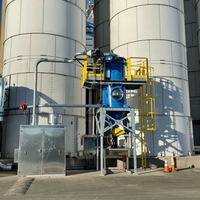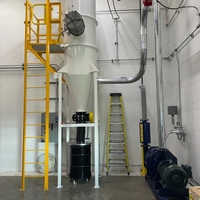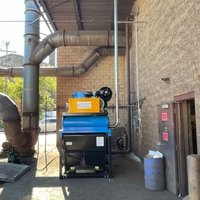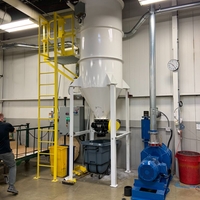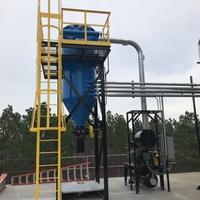At American Vacuum Company, we are experts in industrial central vacuum systems and equipment that are needed to complete each specific job.
The primary use for central vacuum systems for general housekeeping of fugitive dust and offers a way to clean up large spills/ piles throughout the facility. The vacuum unit is typically located in a centralized location with a tube manifold system piped throughout the desired work area. Central Vacuum systems can have anywhere from 1 operator up to 15+ operators at a time.
We can build single and multi-operator use vacuum systems customized to your unique application needs.
Industrial Central Vacuum System Design Process
1. Information Gathering
- Type of plant – Operation
- The material collected, is it explosive?
- Number of operators being used on the system simultaneously
- Determine what diameter hose/cleaning tools require
- Housekeeping system
- Volume of material to be collected in an 8-hour shift
2) Review Application and Information
- Determine size of system and what components are required
- Are there system restraints, space, height issues, power consumption issues
- Location – inside or outside
3) Sizing and Selecting the Propper Vacuum Producer
- Weight of material
- Amount of material to be recovered
- Distance from furthest drop to vacuum location
- Is there a noise issue
- Special electrical requirements for motor
4) Choosing the Correct Baghouse
- Location: Indoors or Outdoors
- Are there height restraints
- Choose between a pleated filter bag or cartridge filter design
- Calculate the proper air to cloth ratio. Determine square feet of filter area
- Apply explosion vents and fire suppression systems if needed.
- Service platform/ ladder required
- Determine dumping device from cone bottom of receiver ie. manual valve, rotary airlock
5) Configuring the Electric Control Panel
- How many starters required
- Enclosure, NEMA 12, NEMA 4 etc.
- Does customer want remote start/stop locations
- Ethernet communication required
- Special requirements: Timer, E-Stop, Fused disconnect, VFD etc.
6) Designing the Tube System
- Determine material – carbon steel, zinc, aluminum, stainless steel
- Determine thickness of tube: based upon what we are recovering
- Determine the number of vacuum drops
- Calculate proper line sizes
- Determine method of joining tube to fittings – Compression coupling, shrink sleeves
7) Hose and Tool Kits
- Coming up with the best kit to fit each particular need. Are they cleaning floors? Walls? Machinery?
- Do hose/tools need to be grounded

Features
- Low cost of ownership with minimal maintenance
- NFPA Compliance for combustible dust
- OSHA Compliance for Silica & Carcinogenic Material
- Indoor or outdoor installation
- Centrally collect all your waste and have an automatic discharge into your own waste container.
- Collect a wide variety of materials
- Industrial Central Vacuums can be located outside of a clean room or away from a hazardous location.
- All central vacuum units are designed to run 24 hours per day, 7 days per week.
Benefits
- Reduce energy & labor costs.
- Remember cutting maintenance time means less production downtime.
Why is a Custom Industrial Central Vacuum better?
No two applications are the same, therefore having a design system in place to tailor a vacuum system to a specific application is ideal. Through our consultation process we help you select the right system or create the best design for your application that benefits you and your employees by creating a safer and cleaner work environment.
- Fully integrated into your facility with fixed piping and electrical controls
- Adaptable to all types of environments and conditions
Industrial Central Vacuum Equipment
From exact tubing & fittings, system separators, pumps and cleaning tools needed for the most efficient central vac system possible our team will be there to help with proper installation. Contact American Vacuum today to put our industrial central vacuum expertise to work for you.
- Multiple Operators for 1-1/2” & 2” hoses
- Optional systems for 2.5”, 3”, 4” + hoses available
What sizes do industrial central vacuums come in?
Industrial Central Vacuum systems come in all shapes and sizes. Most items on a central vacuum system are interchangeable based on the design requirements. From the baghouse to the blower to the tubing, all items are configurable to a specific application. From small single operator systems with 1 drop to 15 operator systems spread out over 100s of drops.





